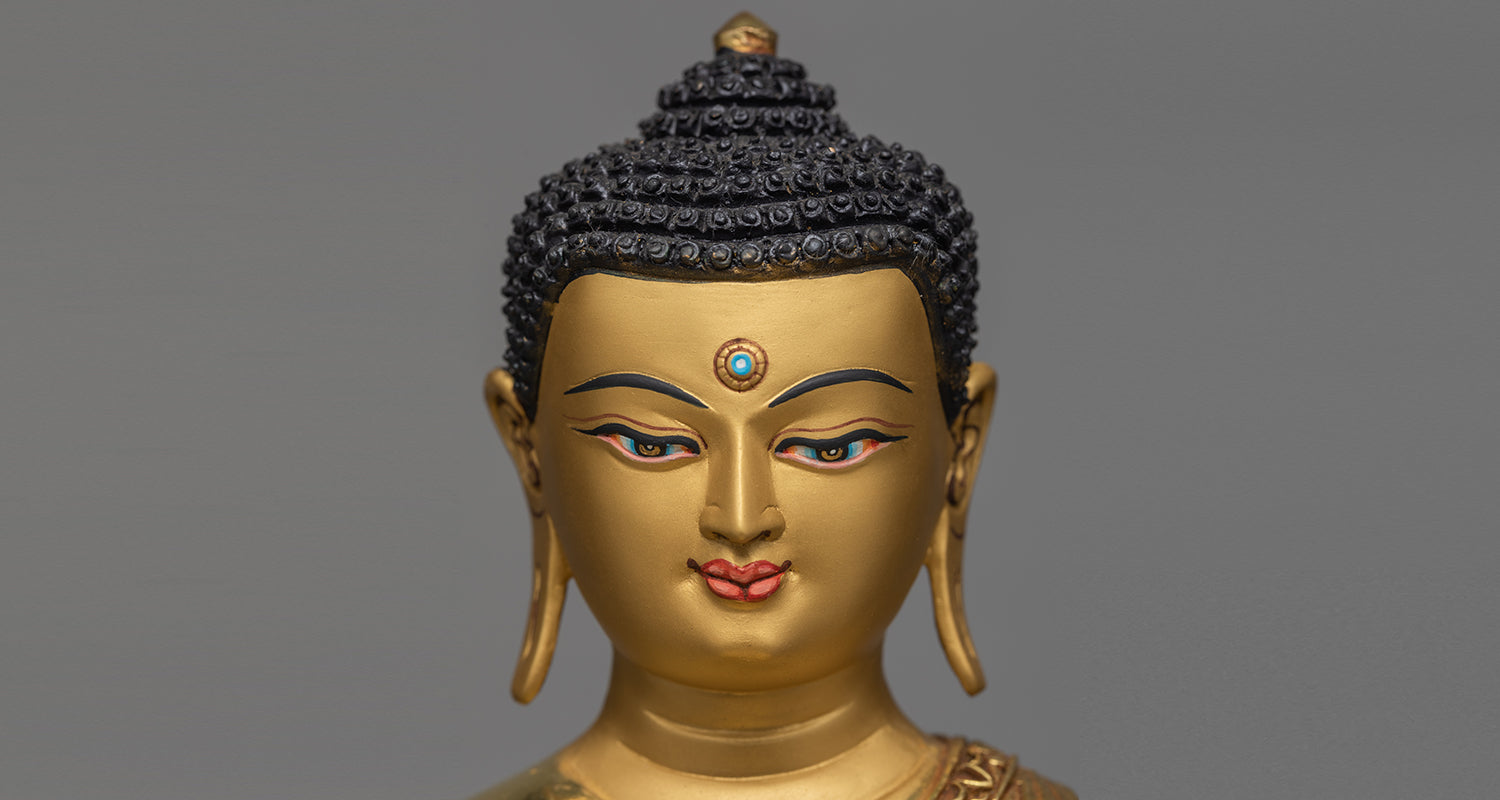How the first ever Buddha Statue was made?
The History of Buddhist Sculpture:
Anathapindika, one of the Shakyamuni Buddha's disciple was making daily offerings of the midday meal to him and his disciples. Because of his religious duties, Buddha was not always able to attend. So the patron respectfully requested his permission for a statue to be placed on his seat, as it seemed inauspicious to leave the seat empty.
The Buddha agreed, and the statue was made with precious substances by divine artists, complete in every detail. This statue became known as the Precious Teacher. Another time, Buddha Shakyamuni had departed for the Heaven of the Thirty-Three to teach his mother. So the king of Varanasi made a sandalwood image of the Buddha for his personal devotions. It is said that when the Buddha returned to the human realm, this statue was known as the Sandalwood Lord. It took six steps in welcome.
Another time, Buddha Shakyamuni had departed for the Heaven of the Thirty-Three to teach his mother. So the king of Varanasi made a sandalwood image of the Buddha for his personal devotions. It is said that when the Buddha returned to the human realm, this statue was known as the Sandalwood Lord. It took six steps in welcome.
These were the world's first two statues of Buddha Shakyamuni, and the many statues made thereafter were based on these models.
Before passing into Parinirvana, the Buddha permitted for images to be made in his likeness, to guide holders of extreme views. Rahula, the Buddha's son and disciple made a statue of the Buddha's Sambhogakaya form, Vairochana. This image is said to reside in the outer ocean of the universe.
Indra also commissioned a statue of the Buddha made of five special substances along with 521 precious jewels from the world of gods and humans.
Once the celestial artisan Vishvakarman intended to measure the Buddha's body. He tied his measuring string to one of the Buddha's toes. No matter how high he stretched the string to the Buddha's body, he could not reach the end. When he reached the heaven of Supreme Joy,
Buddha said, "Don't think you can measure the Buddha's body or conceptualize the Buddha in this way. Just meditate on the Buddha's body.
Vishvakarman did as he was told and immediately arrived before the Buddha and was able to fashion his likeness perfectly.
He made three images of the Buddha at different stages of his life: as an 8 years old, as a 12 years old and as 25 years old. After this, many statues were made, but these three are said to be the most exceptional, as the Buddha himself blessed them.
- The statue of the Buddha at the age of 25 was taken to the God realms,
- the statue depicting him at age of 12 was taken to China
- the one at age of 8 was taken to Nepal
Many years later, the latter two were offered to King Songtsen Gampo in Tibet by his Chinese and Nepalese queens. Enshrined respectively in the Jokhang and Ramoche Temples in Lhasa, they are the famed Jowo statues.
The Three Brahmin Brothers:
After the Buddha had passed into parinirvana, there were not many exceptional artists among ordinary human beings, so many divine artists emanated as humans to make fine statues. Eighty years after the Buddha's parinirvana, in the city of Magadha, three Brahmin brothers appeared.
- The eldest, named Jina erected a temple and an image of the Buddha from precious stones at Sarnath, near Varanasi, where the Buddha first taught.
- The second brother, Sadhujina built a temple and an image of the teacher made of earth from the eight great holy places of Buddhism, at the Bamboo Grove in Rajagriha.
- The youngest, Kusala erected an image of the teacher at the moment of attaining complete enlightenment, in the sanctuary of Bodhgaya.
This powerful statue was greatly blessed and had special jewels in its eyes. The only difference between it and the Buddha himself was that Lord Buddha's tongue was long, his clothes did not touch his body, and so on, but everything else was the same. Seeing this statue is said to be the same power and blessings as meeting the Buddha in person.
From the time of these three brothers over the next century, the traditions of Buddhist painting, sculpture, and temple design became widespread, and Buddhist patrons commissioned many statues and structures, such as the Eight Stupas.
Buddha Statues during different time lines:
During the reign of King Ashoka, many naga and yaksha artists, of nonhuman and semi divine form, developed innovative styles for statues and stupas, such as those at Bodhgaya and the Stupas at the major Buddhist holy places. Many artworks were also made during the time of Nagarjuna. As explained in Gega Lama's Principles of Tibetan Art:
Later during the reign of King Sangyay Chok, an artisan named Bimbisara introduced marvelous styles of sculpture and painting reminiscent of those earlier divine artists. His numerous followers became known as the "lineage of divine artists," and he, having been born in Magadha, was called "the artist from the central country."
Again, during the reign of King Ngangtsul appeared an artist from the region of Maru, known as Tenzin who was incredibly skilled in Buddhist iconographic art. His style of painting and sculpture, which resembled that of the yaksha artists, became known as the "western-style" or "heart of the west."
During the reigns of King Deva Pala and Sri Dharma Pala, an artist from the region of Varenta named Dheman, and his son Vitsali developed numerous styles in casting, relief work, and sculpture resembling the styles of naga artists establishing himself in Bengal and his style became known as the style of the God of the East (even though it spread throughout India).
Source: Art of Awakening




